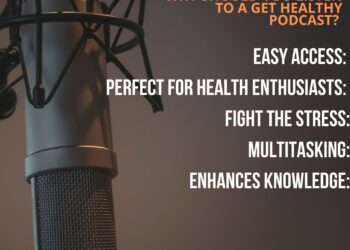Being an ICU Doctor During the Covid Epidemic – Dr. Sam Kais, Dearborn Michigan


Hear an Intensive Care Unit physician describe what it’s like to work in a hospital during the Covid epidemic. Dr. Sam Kais is on the front lines at Beaumont Hospital in Dearborn Michigan doing everything he can to save lives. He talks about hospital conditions, PPE’s, Covid management strategies, who are the most vulnerable, and how the medical system is trying to cope.
Sam Kais, M.D. Director of Trauma and Critical Care, Beaumont Health in conversation with Kris Ferguson, M.D. Board Certified Anesthesiology & Pain Management and host of the Get Healthy 360 podcast.
Interview conducted 3/31/2020
HIGH RISK POPULATIONS
- Elderly, risk exponentially increases with each decade of life but young are not immune
- Diabetics, especially those with poor glycemic control
- Hypertension
- Cardiac disease
- Patients with initial gastrointestinal (GI) symptoms seem to have worse outcomes
Trajectory of symptoms
Symptoms develop over a few days to up to 14 days:
- Typically flu like with fever, headaches, fatigue progressing to a sore throat, dry cough
- Can include back and neck pain
- Can include GI symptoms of abdominal pain, diarrhea, vomiting
- Can include loss of smell, taste
- Shortness of breath typically starts sometime after day 4-5
- Around day 10 there is a cytokine storm which leads to worsening shortness of breath and this is often when patients present to the ER for evaluation, treatment
- With cytokine storm will often develop disseminated intravascular coagulation (DIC) type state & be hypercoagulable
- Autopsies on Covid patients show multiple pulmonary embolism (Pes)
What labs are seeing
- Often see leukopenia, lymphocytopenia, thrombocytopenia
- Elevated liver function tests (LFT)
- Acute renal failure
- Acidosis
- Elevated d-dimer
- Elevated cardiac markers
Chest x-rays may not correlate to severity of symptoms but typically will see bilateral interstitial infiltrates “white out”
Cytokine storm can lead to renal failure, liver failure, diabetic ketoacidosis, new onset cardiac involvement, typically myocarditis. Can have arrythmias (afib).
Will typically see hypotension which persists even after fever and White Blood Cells (WBCs) improve
Management strategies
- Strict teams of caregivers and physical locations to separate COVID / non-COVID populations
- FLUID resuscitation is contraindicated as the often leads to CHF/pulmonary edema. So KEEP PATIENTS DRY.
- Low threshold for intubation
- No likely benefit from bilevel positive airway pressure (BIPAP) or continuous positive airway pressure (CPAP) as not able to get high enough pressure and increased risk to staff due to aerosolization
- Albuterol can help but should use MDIs not nebulizers to reduce aerosolization (can puff directly into ETT tube if intubated)
- Mixed results in regards to benefit from steroids
- If evidence of hypercoaguability start Heparin ASAP
- Best practice to start advanced lines at time of intubation (by same provider) to reduce PPE use
- Recommend groin lines rather than IJ, chest to increase distance of staff from possible exposure to aerosolization but also reduces risk with high pressure ventilation
- PRONING is crucial: anterior lung less affected and proning moves fluid from posterior lungs which creates improved balance, recruitment, oxygenation, ventilation. Typically done for 2-3 days in a rotating schedule. MAY have some benefit for those not intubated as well.
- Jury out on benefit of Plaquenil (hydroxychloroquine) and Azithromycin. If decision is made to use, need to be aware of increased risk of cardiac arrythmias, hepatic and renal failure.
- Theoretically MAY have some benefit in early use of cromolyn to prevent/reduce cytokine storm by suppression of mast cell activation
Ventilator management (found in podcast ~ 18 minutes, followed by information on proning):
OXYGENATION IS KING
Minimize ventilator setting changes
- APRV (airway pressure release ventilation)- can keep patient awake but can only be used in some cases
- Settings typically 30/0 with variable tidal volume (30 over 5-7 seconds with 0 for 0.5 second- CO2 dump)
- High pressure ventilation for sicker patients but will need aggressive sedation & often paralytics
- Sedation options limited due to shortages of fentanyl, propofol, versed, lorazepam. Some using Precedex, atypical antipsychotics (caution d/t possible QT prolongation)
- Often running with PEEPS 20-25 and pressures 35-40, cautiously as > 25 can cause barotrauma, but often no other options
- Allow permissive hypercapnia by balancing acidosis with concentrated bicarb (10 amps in 500 mL, starting at 25 mEq per hour & titrating) to target pH of < 7.28.
- Once pH is < 7.2 can wean Fi02 to get to < 50%.
- Once FiO2 is < 50% can work on weaning PEEP.
Link for free CME from Society of Critical Care Medicine:
https://www.sccm.org/Disaster/COVID19-ResourceResponseCenter











